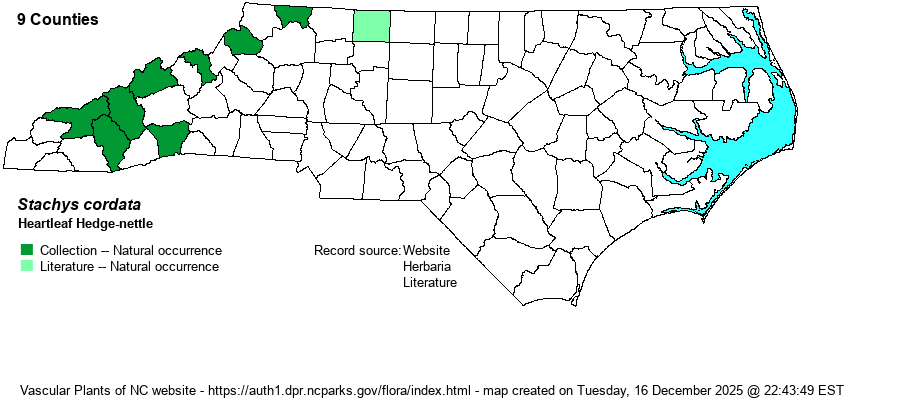| Author | Riddell | |
| Distribution | Poorly known and very easily confused with S. nuttallii, which are often lumped together by some references, and thus it is questionable whether each should be considered as good species. The ranges between these two are thus open to question; both species occur at lower elevations in the Mountains. Weakley (2018) also says that it has been recorded in the Piedmont in Stokes County.
This species ranges from NY west to IL, and south to northern GA.
| |
| Abundance | Apparently rare in the Mountains, and very rare in the northwestern Piedmont (Stokes County). The NCNHP tracks the species as Significantly Rare, with a State Rank of S1. However, as the identification of specimens (and sight reports) between this species and S. nuttallii is difficult, the website editors prefer a rank of S1S2. | |
| Habitat | This species occurs in low or rich woods, often over high pH soil. More details are needed on habitats in the state, to distinguish it from habitats occupied by S. nuttallii. | |
| Phenology | Blooms from June to August, and fruits from September to October. | |
| Identification | This Stachys probably has the largest or at least the widest leaves in the genus in NC, with them being widely ovate, with a clearly cordate base; the leaf tip is somewhat rounded and is not acute. Also, the teeth are rounded, as in S. nuttallii. That species is quite similar, but its leaves are more elliptic-oblong and with an acute tip, and the base is rounded to only very slightly cordate. Lastly, this species has longer petioles than found on S. nuttallii; this species has them about 2/5-inch long or more, whereas that of S. nuttallii is typically less than 1/5-inch long. As both occur in the lower elevations of the mountains, in moist to rich soil, you have to be very careful with your identification of these. | |
| Taxonomic Comments | Older references named this species as S. riddellii. However, some now consider S. cordata and S. nuttallii to be conspecific.
Stachys is a large and complex genus that is still actively being worked on, and our understanding of the species is slowly being clarified. For interested readers, we recommend journal papers by Nelson (1981, 2008) and by Fleming et al. (2011). | |
| Other Common Name(s) | None | |
| State Rank | S1 [S1S2] | |
| Global Rank | GNR | |
| State Status | SR-P | |
| US Status | | |
| USACE-agcp | FAC link |
| USACE-emp | FAC link |

